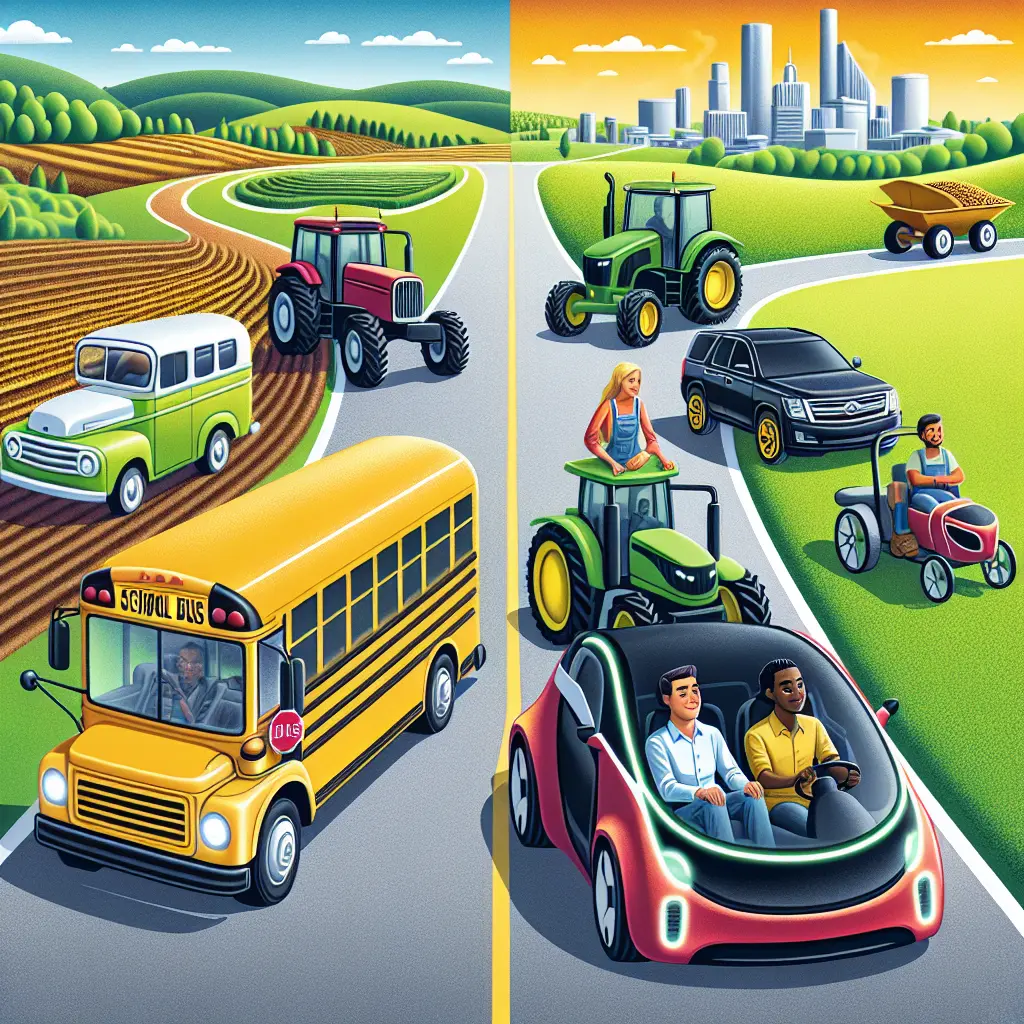
Transforming the Landscape: The Impact of Self-Driving Cars on Rural Transportation
In the ever-evolving realm of transportation innovation, self-driving cars have emerged as a promising force, poised to redefine how we perceive mobility. While much attention has been directed toward urban applications, the impact of autonomous vehicles on rural transportation holds transformative potential. As driverless cars make their way into rural communities, they promise to reshape the rural economy and become pivotal tools in bridging the mobility gap in these areas.
Enhancing Rural Mobility with Self-Driving Technology
Self-driving cars promise to enhance rural mobility by providing reliable and efficient transportation options where public transit is limited. In regions like the West Nile, where incentives are being proposed to encourage investment, the adoption of self-driving cars could further stimulate economic growth by improving access to goods, services, and job opportunities.
Key Benefits of Autonomous Vehicles in Rural Areas
- Increased Safety: By reducing human error, self-driving technology can lower accident rates on rural roads, which are often more hazardous than urban ones.
- Reduced Travel Times: Autonomous vehicles can optimize routes and travel at consistent speeds, leading to faster journeys between rural towns and cities.
- Enhanced Accessibility: For individuals without access to personal vehicles, driverless cars provide a vital link to essential services like healthcare and education.
Addressing Challenges in Rural Transportation
Despite their potential, integrating self-driving cars into rural infrastructure presents unique challenges. Many rural areas lack the necessary road networks and internet connectivity critical for autonomous vehicle operation. According to recent reports, automakers have reduced their press releases on electric vehicles, indicating a need for clearer communication strategies around autonomous vehicle deployment in these areas.
Strategies for Overcoming Infrastructure Hurdles
- Infrastructure Development: Upgrading roads and enhancing digital connectivity are paramount for supporting autonomous vehicles. Government and private sector collaboration can play a significant role in this effort.
- Local Engagement: Engaging with rural communities to understand their specific needs can ensure that self-driving technology is tailored effectively to local conditions.
- Policy Support: Policies that incentivize the deployment of autonomous vehicles in rural areas can accelerate adoption and maximize benefits.
Case Study: Lessons from China's Robotaxi Fleet
China's burgeoning robotaxi fleet offers a glimpse into the future of autonomous transportation. Although primarily focused on urban settings, the lessons learned from China's approach can be applied to rural environments. The key takeaway is the importance of robust infrastructure and regulatory frameworks that support innovation while ensuring safety and reliability.
Economic Implications for Rural Areas
The introduction of self-driving cars can stimulate economic activity in rural areas by:
- Facilitating Tourism: Improved transportation can attract visitors to rural destinations, boosting local businesses.
- Supporting Local Businesses: Easier access to regional markets can enhance supply chains and expand customer bases for rural enterprises.
- Job Creation: The development and maintenance of autonomous vehicle systems can generate new employment opportunities.
The Future of Rural Transport: Opportunities and Challenges
As self-driving cars gain traction in rural communities, they hold the promise of transforming not just personal mobility but also contributing to sustainable growth. The Employee Benefits Administration Software Market Forecast underscores the importance of innovative solutions in driving economic development. Similarly, autonomous vehicles represent a strategic tool for enhancing rural prosperity.
Navigating Technological and Social Barriers
- Technological Adaptation: Ensuring that autonomous systems can handle the diverse conditions found in rural areas, such as unpaved roads or erratic weather.
- Community Acceptance: Building trust and confidence among residents regarding the safety and efficacy of self-driving cars.
- Sustainability Concerns: Balancing the environmental impact of new technologies with their economic benefits.
Looking Ahead: Strategic Considerations
To harness the full potential of self-driving cars in rural transportation, stakeholders should consider:
- Investing in Research and Development: Continued innovation is crucial for refining self-driving technology to meet rural needs.
- Collaborative Partnerships: Public-private partnerships can leverage resources and expertise to address infrastructure gaps and facilitate widespread adoption.
- Monitoring Global Trends: Keeping abreast of international developments, such as those observed in China's robotaxi deployment, can inform domestic strategies.
By navigating these complexities, self-driving cars can become a cornerstone of smart transportation in rural areas, offering unprecedented opportunities for growth and development.
Conclusion: A New Era for Rural Transportation
The potential impact of self-driving cars on rural transportation is profound and transformative. As these vehicles promise to enhance rural mobility, they offer solutions to long-standing challenges like limited public transit options and economic isolation. By reducing human error, self-driving technology can make rural roads safer, while optimized travel routes reduce travel times and improve accessibility to essential services such as healthcare and education.
However, integrating self-driving cars into rural areas is not without challenges. Infrastructure development, digital connectivity, and community engagement are critical components for successful adoption. As seen in China’s robotaxi deployment, robust infrastructure and regulatory frameworks are essential for ensuring safety and reliability. Moreover, policy support and local engagement are vital in tailoring autonomous technology to meet the unique needs of rural communities.
Economically, self-driving cars can revitalize rural areas by boosting tourism, supporting local businesses, and creating new job opportunities in vehicle development and maintenance. Yet, challenges such as technological adaptation, community acceptance, and sustainability concerns must be addressed to maximize these benefits.
Looking ahead, strategic considerations include investing in research and development, fostering public-private partnerships, and monitoring global trends to inform domestic strategies. By navigating these complexities, self-driving cars could become a cornerstone of smart transportation in rural areas, offering unprecedented opportunities for growth and development.
As you reflect on the transformative potential of self-driving cars in rural settings, consider how these technologies might impact your community or personal mobility. Share your thoughts or experiences with us—your insights could spark meaningful discussions and drive further innovation.
Author: Maxwell Brighton